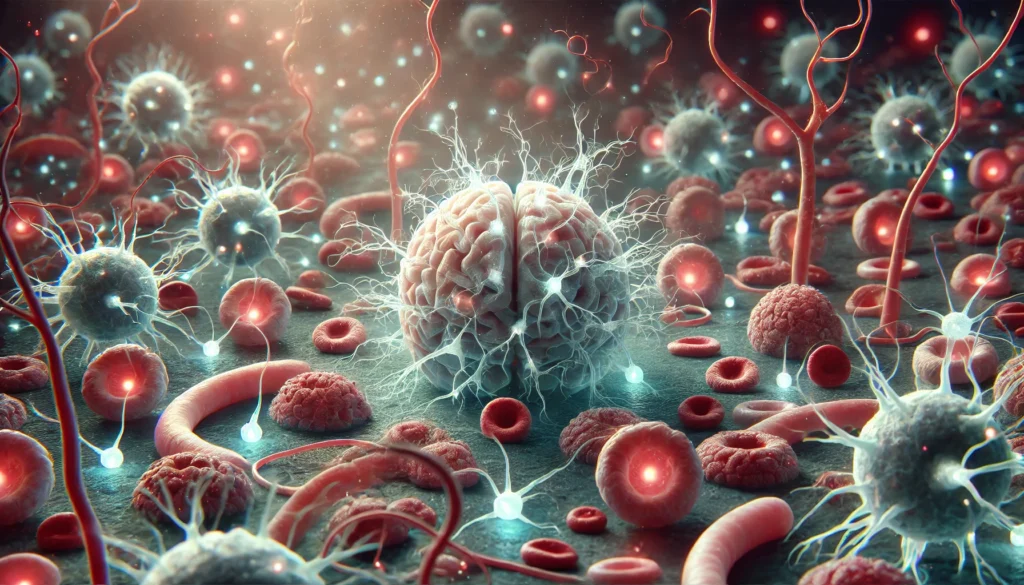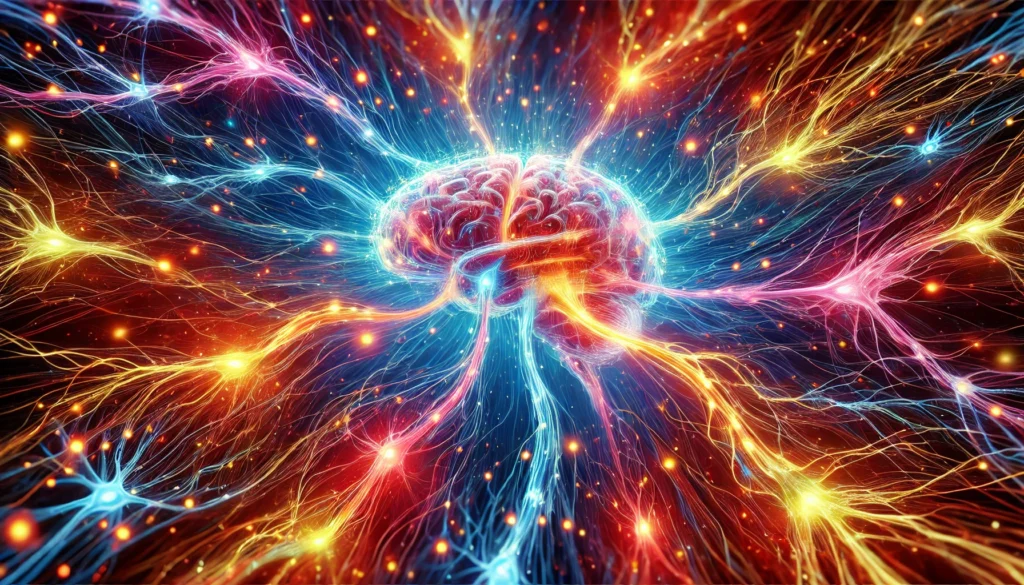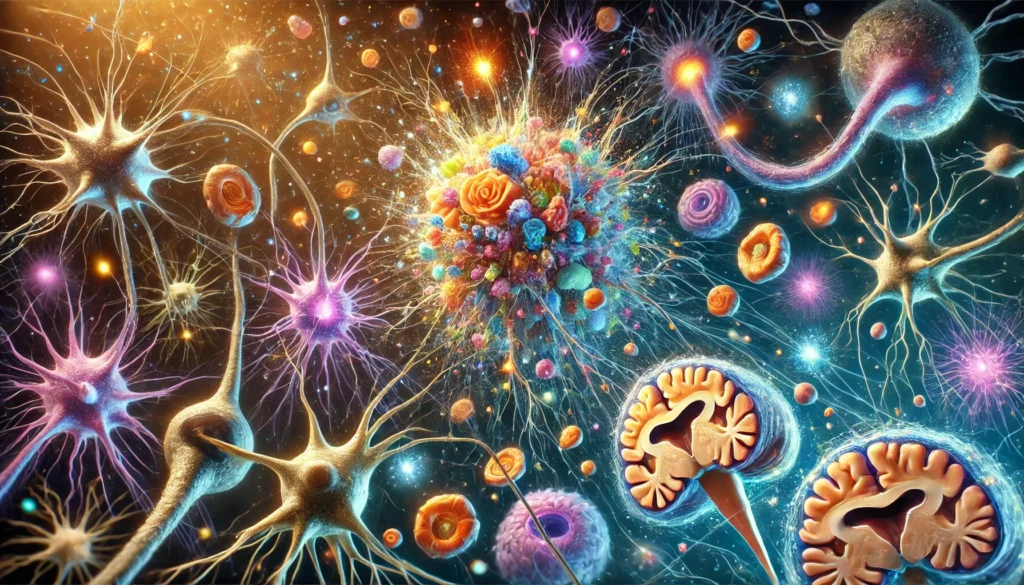The human brain is one of the most complex and awe-inspiring structures in the known universe. Housing approximately 86 billion neurons and an even greater number of supporting glial cells, the brain orchestrates everything from basic survival to profound creativity and philosophical reasoning. Despite its centrality in human life, many people are still unclear about what brain cells actually are, what they’re called, and what brain cells look like at the microscopic level. Understanding these fundamental elements is not only crucial for grasping the basics of neuroscience, but it also sheds light on how cognitive health is maintained or lost over time. In the context of anti-aging and cognitive enhancement, gaining a clear, scientifically grounded understanding of brain cell function offers important insights into longevity and mental performance.
At its core, the phrase “what are brain cells” opens up an inquiry into the cellular machinery behind human thought, emotion, memory, and consciousness. Likewise, exploring what cells in the brain are called helps delineate the specialized roles each type plays. Finally, the question of what brain cells look like is far from trivial—it draws us into the elegant architecture that defines neural communication and function. This article delves deeply into all three dimensions, weaving together current neuroscience with practical implications for brain health and aging. Whether you’re a student of biology, a practitioner in health sciences, or simply someone curious about the brain’s inner workings, this comprehensive exploration offers clarity, depth, and actionable insights.
You may also like: Best Brain Foods for Focus, Memory, and Longevity: What Science Says
Defining Brain Cells: The Core Components of Cognitive Life
When people ask, “what are brain cells,” they’re usually referring to the fundamental cellular units responsible for brain function. Brain cells are specialized types of cells found exclusively in the nervous system, particularly within the brain and spinal cord. These cells include neurons, which are the primary communicators in the brain, and glial cells, which support and maintain the environment in which neurons function. Both types are indispensable, forming a collaborative network that drives every thought, sensation, and action.
Neurons, often considered the stars of the show, are the cells primarily responsible for sending and receiving electrical signals. These messages, known as action potentials, allow for instantaneous communication between different parts of the brain and between the brain and body. Each neuron is made up of three main parts: the cell body or soma, which contains the nucleus; dendrites, which receive signals from other cells; and an axon, which transmits the signal to other neurons or target tissues. But neurons don’t operate in isolation—they rely heavily on the support of glial cells.
Glial cells, often less celebrated, are equally vital. They include astrocytes, which regulate blood flow and synaptic activity; oligodendrocytes, which produce the myelin sheath that insulates axons; and microglia, which act as the brain’s immune defense. These cells don’t generate electrical impulses themselves, but they create the conditions that allow neurons to do so efficiently and safely. Without glial cells, the brain would quickly succumb to metabolic stress, inflammation, and disorganization.
Answering the question of what are brain cells requires acknowledging this diversity and interdependence. Neurons and glia represent two arms of a unified system, each fulfilling roles that are critical to brain health and cognitive function. Together, they form a dense, intricately organized matrix that supports everything from basic reflexes to higher-order reasoning.

Understanding the Nomenclature: What Are Cells in the Brain Called?
To further demystify the subject, we must examine what are cells in the brain called in scientific terms. Neurons, as previously mentioned, are the primary information-processing units. Their names often reflect their shape or location—pyramidal neurons, for example, have a triangular-shaped cell body and are predominantly found in the cerebral cortex, playing crucial roles in cognition and motor control. Purkinje cells, another type of neuron, reside in the cerebellum and are instrumental in motor coordination.
Beyond neurons, each type of glial cell has its own nomenclature rooted in structure and function. Astrocytes, named for their star-like shape, are involved in everything from regulating neurotransmitter levels to maintaining the blood-brain barrier. Oligodendrocytes derive their name from the Greek words meaning “few branches,” referring to their relatively sparse cellular projections. They are responsible for myelinating neurons in the central nervous system, a function critical for rapid signal conduction. In the peripheral nervous system, this role is filled by Schwann cells, which perform a similar task.
Microglia, the brain’s resident immune cells, are small and agile, constantly patrolling the neural landscape for signs of infection, injury, or degeneration. Their name underscores their diminutive size, but their impact is anything but small. In recent years, microglia have gained increasing attention for their role in neurodegenerative diseases like Alzheimer’s and Parkinson’s, as well as in modulating inflammation and synaptic plasticity.
In answering the question, “what are cells in the brain called,” it’s evident that terminology reflects function, structure, and sometimes the historical context of discovery. These names are not arbitrary—they are descriptors rooted in the biology of these cells and their roles within the greater neural ecosystem. Understanding these terms offers a richer appreciation of how specialized and cooperative brain cells truly are.
Visualizing the Invisible: What Does Brain Cells Look Like Under the Microscope?
The next logical inquiry—what does brain cells look like—opens a window into the fascinating visual world of cellular neuroscience. Brain cells are incredibly diverse in shape and structure, with each type adapted for its specific function. Under the microscope, neurons appear as branching, tree-like structures with a centralized soma, multiple dendrites extending outward, and a long, thin axon that may stretch for several millimeters or even longer. The dendritic branches are often studded with tiny protrusions called spines, which form synaptic connections with other neurons.
The axon, sometimes wrapped in myelin produced by oligodendrocytes, appears like a long, insulated wire. At its end, the axon terminates in synaptic boutons, which house neurotransmitters used for chemical communication. The shape and complexity of these structures vary widely between different types of neurons. For instance, pyramidal neurons have a pronounced triangular soma and a single, thick apical dendrite, while Purkinje cells exhibit an almost fractal-like array of dendritic branches that fan out in elaborate patterns.
Glial cells, though less visually dramatic, are equally distinctive under the microscope. Astrocytes have a more stellate appearance, with processes radiating out like the arms of a star. These processes enwrap synapses and blood vessels, playing a critical role in nutrient transport and waste removal. Oligodendrocytes display a compact cell body with few extensions, each forming a segment of myelin around adjacent axons. Microglia, in contrast, appear as small cells with branching arms that retract and extend as they move through the brain.
Imaging technologies such as fluorescent labeling, electron microscopy, and two-photon microscopy have allowed scientists to capture these intricate forms in vivid detail. Each image adds another layer to our understanding, revealing not just what brain cells look like, but how form underlies function. The architecture of these cells is a testament to the evolutionary refinement of neural systems, optimized for efficiency, adaptability, and resilience.

Frequently Asked Questions: Understanding Brain Cells in Depth
1. Can brain cells regenerate after injury or age-related decline?
Yes, some brain cells can regenerate, although the process is limited and highly specific. In regions like the hippocampus, adult neurogenesis—the birth of new neurons—has been observed even in later life. However, this regenerative ability is affected by various factors including age, lifestyle, and overall brain health. Asking what are brain cells capable of post-injury reveals a growing field of research focused on neuroplasticity and cellular resilience. This understanding helps researchers explore treatments that could support regrowth or functional compensation after trauma or neurodegenerative changes.
2. How does chronic stress affect different types of brain cells?
Chronic stress elevates cortisol levels, which can damage neurons and alter the behavior of glial cells. In particular, stress can shrink dendritic branches and impair synaptic connectivity, especially in regions like the prefrontal cortex and hippocampus. When exploring what does brain cells look like under stress, imaging studies often reveal structural atrophy and inflammation. Microglia may become hyperactive, contributing to neuroinflammation, while astrocyte function becomes dysregulated. Understanding what are cells in the brain called in stress responses allows for more targeted therapeutic strategies, including mindfulness-based and pharmacological interventions.
3. Do lifestyle factors influence the longevity of brain cells?
Absolutely. Physical activity, cognitive engagement, social interaction, and a diet rich in omega-3 fatty acids and antioxidants all contribute to healthier and longer-living brain cells. When considering what are brain cells most responsive to, lifestyle emerges as a significant modulator of their survival and adaptability. Epigenetic changes prompted by environmental enrichment can lead to better synaptic plasticity and slower aging. Furthermore, knowing what are cells in the brain called helps us understand how different cell types—neurons versus astrocytes or microglia—respond uniquely to these interventions.
4. Are brain cells involved in emotional regulation and mental health?
Yes, brain cells play a direct role in emotion, especially in regions like the amygdala, anterior cingulate cortex, and hippocampus. Neurons in these areas communicate through specific neurotransmitters like serotonin and dopamine, which are closely tied to mood and anxiety regulation. When we ask what are cells in the brain called that influence emotion, we’re referring to both excitatory and inhibitory neurons, as well as supportive astrocytes that regulate neurotransmitter uptake. Structural changes in these cells have been linked to disorders like depression and PTSD. What brain cells look like in individuals with these conditions often shows alterations in dendritic density and glial activity.
5. How does aging affect the appearance and structure of brain cells?
Aging induces a range of morphological changes in brain cells, including reduced dendritic branching, shrinkage of neuronal cell bodies, and changes in glial cell function. Examining what does brain cells look like in older adults often reveals fewer synapses and increased cellular debris. Microglia may become senescent, contributing to chronic low-grade inflammation. Meanwhile, astrocytes may lose their ability to regulate the extracellular environment efficiently. Understanding what are brain cells doing during aging helps researchers identify interventions that might preserve cellular integrity well into old age.
6. Are there differences between male and female brain cells?
Emerging research shows that sex hormones like estrogen and testosterone influence how brain cells develop and function. For instance, estrogen has neuroprotective effects on certain neurons and glial cells, especially during injury or aging. What does brain cells look like under the influence of different hormones? In animal models, structural differences have been noted in hippocampal neurons and microglial activity based on sex. When asking what are cells in the brain called that exhibit these sex-based differences, scientists are now identifying hormone-sensitive subtypes that may respond uniquely to therapy.
7. How are brain cells being used in cutting-edge medical research?
Brain cells are central to advancing treatments for Alzheimer’s, Parkinson’s, multiple sclerosis, and even psychiatric disorders. Stem cell research is enabling the growth of organoids—miniature brain-like structures in labs—that help scientists observe what does brain cells look like during development or disease progression. Furthermore, understanding what are brain cells from a cellular engineering perspective opens possibilities for regenerative therapies. Scientists are also exploring how modifying the behavior of glial cells could slow disease progression or promote healing. The knowledge of what are cells in the brain called is crucial to targeting the right populations in these complex interventions.
8. Can artificial intelligence accurately model how brain cells function?
To some degree, yes. AI can simulate neural networks and glial interactions using mathematical models and machine learning algorithms. However, these simulations remain simplifications of the intricate processes that define what are brain cells in biological terms. Real brain cells possess bioelectric, biochemical, and epigenetic properties that AI currently cannot fully replicate. By studying what brain cells look like and how they behave in real environments, researchers aim to improve AI systems while also learning more about the brain itself. Accurate modeling depends on knowing precisely what are cells in the brain called and how they interact in health and disease.
9. How do toxins or pollutants affect brain cell health?
Toxins like lead, mercury, and air pollutants have neurotoxic effects, especially in developing brains. These substances can impair synaptic formation, damage mitochondria, and disrupt the blood-brain barrier. Exploring what are brain cells exposed to in toxic environments reveals a cascade of cellular dysfunctions, including oxidative stress and apoptotic signaling. Notably, astrocytes and microglia are often the first responders to such damage, attempting to contain the injury. Observing what does brain cells look like after toxic exposure helps in diagnosing environmental brain injuries and designing detoxifying or preventive interventions.
10. What advancements are being made to visually map brain cells more precisely?
Technologies such as CLARITY, light-sheet microscopy, and single-cell RNA sequencing are revolutionizing how scientists visualize and classify brain cells. These tools allow unprecedented access to the 3D architecture and molecular profile of individual cells. When asking what does brain cells look like at this level of detail, we uncover complex branching patterns, gene expression signatures, and connectivity maps that were previously hidden. This not only enhances our understanding of what are brain cells but also enables precision medicine approaches tailored to individual neural profiles. As our ability to define what are cells in the brain called becomes more refined, so too does our capacity to intervene with specificity and accuracy.

Conclusion: Why Understanding Brain Cells Matters for Longevity and Cognitive Health
In reflecting on the intricacies of neural anatomy and function, we return to the core questions: what are brain cells, what are cells in the brain called, and what does brain cells look like? These inquiries are more than academic—they have direct implications for how we age, how we think, and how we preserve the integrity of our minds across the lifespan. The more we understand the structure and behavior of neurons and glial cells, the better positioned we are to make informed choices that support brain health.
Brain cells are not just passive players in our mental lives; they are active participants that respond dynamically to our experiences, environment, and behaviors. Activities that promote neurogenesis, such as regular physical exercise, mental stimulation, and a nutrient-rich diet, have been shown to enhance neuronal function and delay cognitive decline. At the same time, avoiding neurotoxic exposures and managing stress are critical for preserving the delicate balance required for neural harmony.
Knowing what cells in the brain are called allows researchers and clinicians to target interventions more precisely. Whether exploring treatments for neurodegenerative conditions or developing cognitive enhancement strategies, accurate terminology guides both diagnosis and innovation. Meanwhile, appreciating what brain cells look like fosters a deeper respect for their complexity and vulnerability. These cells are not easily replaced, and their health is directly tied to our quality of life.
In a world where cognitive performance is increasingly valued and neurodegenerative diseases are on the rise, the need to understand brain cell biology has never been greater. From high-resolution microscopy to molecular neuroscience, the tools of modern science are helping us unravel the mysteries of the brain one cell at a time. By investing in this knowledge, we invest in our own longevity, cognitive resilience, and the promise of a mentally vibrant future.
Ultimately, answering the questions of what are brain cells, what are cells in the brain called, and what does brain cells look like equips us with the intellectual framework to protect and nurture our most vital organ. The brain, in all its complexity, deserves nothing less than our deepest curiosity and our most informed care.
neural anatomy explained, neuron types and functions, glial cell roles, brain cell regeneration, adult neurogenesis, brain aging and cognition, neuroplasticity research, brain cell visualization, microscopic brain structures, neuroscience for longevity, cognitive health strategies, maintaining brain function, understanding brain structure, brain resilience and aging, cellular neuroscience insights, neuron and glial interactions, mental health and brain cells, neurodegenerative disease research, brain health optimization, enhancing cognitive longevity
Further Reading:
Brain Basics: The Life and Death of a Neuron
Brain Anatomy and How the Brain Works
Disclaimer
The information contained in this article is provided for general informational purposes only and is not intended to serve as medical, legal, or professional advice. While Health11News strives to present accurate, up-to-date, and reliable content, no warranty or guarantee, expressed or implied, is made regarding the completeness, accuracy, or adequacy of the information provided. Readers are strongly advised to seek the guidance of a qualified healthcare provider or other relevant professionals before acting on any information contained in this article. Health11News, its authors, editors, and contributors expressly disclaim any liability for any damages, losses, or consequences arising directly or indirectly from the use, interpretation, or reliance on any information presented herein. The views and opinions expressed in this article are those of the author(s) and do not necessarily reflect the official policies or positions of Health11News.


